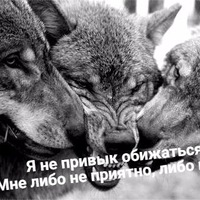
Почему невозможен(кроме просто организованных пептидов) процесс самопроизвольного восстановления
природной пространственной структуры белков (ренатурация)? СРОЧНО!!! 0
0
 0
0
Ответы на вопрос
 Внимание! Ответы на вопросы дают живые люди. Они могут содержать ошибочную информацию, заблуждения, а также ответы могут быть сгенерированы нейросетями. Будьте внимательны. Если вы уверены, что ответ неверный, нажмите кнопку "Пожаловаться" под ответом.
Внимание! Ответы на вопросы дают живые люди. Они могут содержать ошибочную информацию, заблуждения, а также ответы могут быть сгенерированы нейросетями. Будьте внимательны. Если вы уверены, что ответ неверный, нажмите кнопку "Пожаловаться" под ответом.

 0
0
 0
0

Why is the spontaneous restoration of the natural spatial structure of proteins (renaturation) impossible, except for simply organized peptides?
The process of renaturation, or the spontaneous restoration of the natural spatial structure of proteins, is a complex and delicate process. While it is possible for some proteins to renature under certain conditions, it is generally difficult for proteins to regain their native structure once it has been disrupted. Here are some reasons why the spontaneous renaturation of proteins is challenging:
1. Protein Folding Pathways: Protein folding is a highly complex process that involves the formation of specific interactions between amino acid residues to achieve the native structure. The folding pathway of a protein is influenced by various factors, including the sequence of amino acids, the presence of chaperones, and the cellular environment. Disruption of this folding pathway can lead to misfolding or aggregation of the protein, making it difficult for the protein to spontaneously regain its native structure.
2. Entropy and Thermodynamics: Protein folding is driven by a balance between the enthalpy (energy) and entropy (disorder) of the system. The native structure of a protein is typically the most thermodynamically stable conformation, with low entropy. When a protein unfolds, it increases its entropy, which makes it energetically unfavorable for the protein to spontaneously refold into its native structure. The process of renaturation requires overcoming this energetic barrier, which is often difficult without external assistance.
3. Aggregation and Misfolding: When proteins are denatured or unfolded, they can form aggregates or misfolded structures. These aggregates can be stabilized by non-native interactions, such as hydrophobic interactions, which prevent the protein from refolding into its native structure. Additionally, misfolded proteins can act as seeds for further aggregation, leading to the formation of insoluble protein aggregates. These factors further hinder the spontaneous renaturation of proteins.
4. Time and Kinetics: Protein folding is a time-dependent process that occurs on a millisecond to second timescale. The spontaneous renaturation of proteins requires the correct folding pathway to be followed within a specific timeframe. However, the chances of a protein randomly sampling the correct folding pathway and refolding into its native structure within a reasonable timescale are extremely low. The complexity and size of proteins make the spontaneous renaturation process highly improbable.
In summary, the spontaneous renaturation of proteins is challenging due to the complex folding pathways, the thermodynamic barriers associated with entropy, the presence of aggregates and misfolded structures, and the low probability of randomly sampling the correct folding pathway within a reasonable timescale. While some proteins can renature under certain conditions, the general process of spontaneous renaturation is highly unlikely for most proteins.
[[1]]
 0
0
 0
0
Топ вопросов за вчера в категории Биология
Последние заданные вопросы в категории Биология
-
Математика
-
Литература
-
Алгебра
-
Русский язык
-
Геометрия
-
Английский язык
-
Химия
-
Физика
-
Биология
-
Другие предметы
-
История
-
Обществознание
-
Окружающий мир
-
География
-
Українська мова
-
Информатика
-
Українська література
-
Қазақ тiлi
-
Экономика
-
Музыка
-
Право
-
Беларуская мова
-
Французский язык
-
Немецкий язык
-
МХК
-
ОБЖ
-
Психология
-
Физкультура и спорт
-
Астрономия
-
Кыргыз тили
-
Оʻzbek tili



















